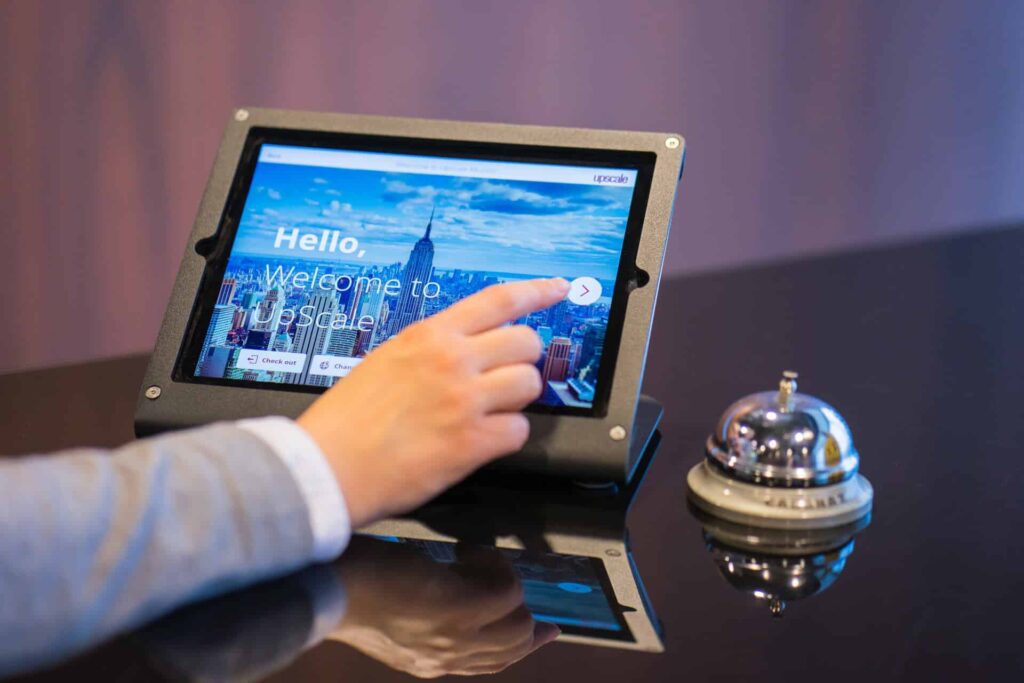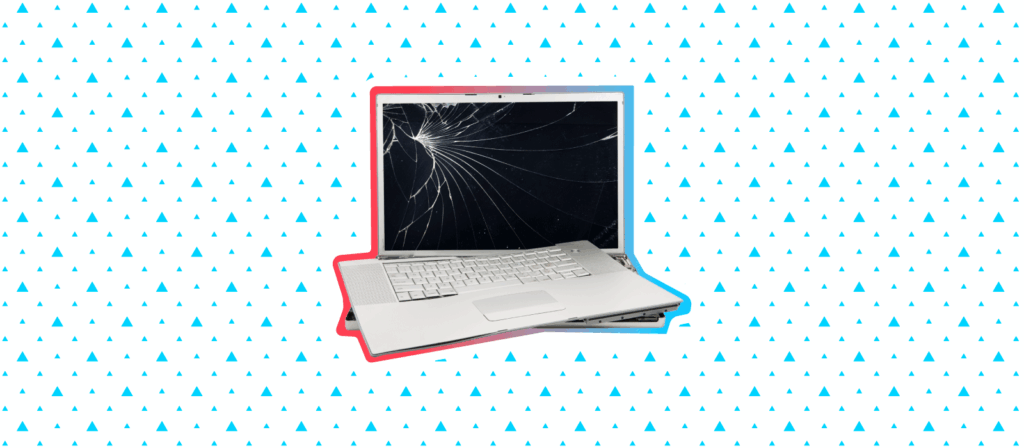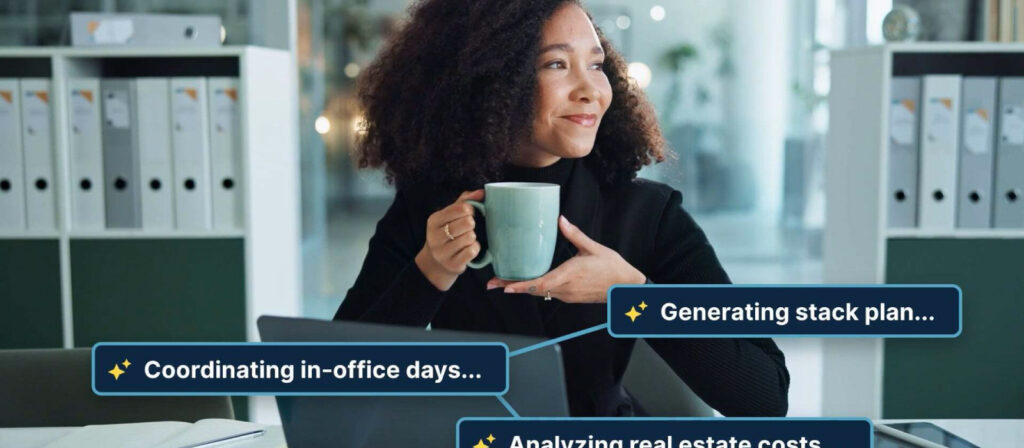Wayfinding signage is one of the most critically overlooked aspects of a successful office. Good wayfinding design helps everyone better navigate their workspace and connect with the people and resources they need, whether they’re working in the office or remotely.
In this article, we explore wayfinding signage. We review the four main types of signs, why they matter, and examples of how to use them in a modern office.
What is wayfinding signage?
What is wayfinding? It’s the combination of tools and systems that help people navigate a built environment.
What is wayfinding signage? It’s the critical physical signs and markers to support wayfinding efforts and help manage traffic flow.
As the office is becoming more complex, so too are wayfinding systems and wayfinding signage. Modern wayfinding in the office now often includes interactive floorplans, IoT sensors, and wayfinding kiosks. These are all managed with complex but user-friendly wayfinding software.
Meanwhile, modern wayfinding signage is also increasingly digital, using high quality and eye-catching graphic design that is as attractive as it is functional.
Good signage design is always about communicating the right information clearly and succinctly. While every office building and/or office space will require its own unique sign system, the goal of wayfinding signage is to support wayfinding efforts. Ultimately, wayfinding signage is to help guide people to where they need to be.
Finally, note that the Americans with Disabilities Act (ADA) includes guidelines for wayfinding signage for public spaces. These guidelines include the use of braille for certain signs and spaces, as well as the need for clear typography and fonts and the appropriate placement for directional and informational signage.
What are the four types of signs?
We can break down wayfinding signage into four types of signs:
- Directional signs—i.e.: signs that help people figure out how to get where they’re going
- Identification signs—i.e.: signs that let you know ‘you are here,’ such as signs for restrooms and other hubs
- Informational signs—i.e.: signs that convey important information, such as warning signs or the availability of wi-fi
- Regulatory signs—i.e.: signs that let you know the rules, such as “no parking” signs
While directional signage is what people often think of first when planning wayfinding, the reality is that we need all of these four types of signs to create a sufficient signage system.
What is the difference between signage and wayfinding?
While closely related, signage and wayfinding are not the same thing.
Signage refers to the physical markers that encompass all the necessary visual communication that help visitors and staff navigate a physical space. Meanwhile, wayfinding is the complete holistic system that is designed to do this.
In other words, while they both share the same goal, signage is just one part of wayfinding.
What is the relationship between navigation and wayfinding?
When we talk about navigating the office, we’re talking about how employees get from here to there, connect with colleagues, and find and book the spaces and assets they need.
Wayfinding in turn is the complete system that is designed to make this process as effortless as possible.

What are the advantages of wayfinding signage?
Assuming a company is using good wayfinding design and strategy, wayfinding signage can help empower employees to be more productive and engaged at work.
Given the rise in hybrid work and the increasing amount of remote working, more workers will be using the office less and less frequently. Therefore, they’ll be requiring extra assistance when navigating the office.
Especially when wayfinding is integrated with interactive directory software that can be accessed from anywhere on a mobile app, the two combined can ultimately help both employees and visitors interact with the workspace better.
Ultimately, wayfinding can save time, as well as cut frustration for everyone. Not only is being lost a complete waste of time, it’s also incredibly annoying.

Wayfinding signs in action
Thanks in large part to more complex workplace management software and the rise of the Internet of Things (IoT), the days of simply using wayfinding signs to get people from ‘a’ to ‘b’ are long gone.
A modern wayfinding system offers a window into the workplace. It connects both visitors and staff with the right people and the right resources at the right time.
The following are examples of how wayfinding signage that is integrated with a company’s integrated workplace management system (IWMS) can help everyone understand and ultimately use their office better.
Wayfinding in hybrid offices
Like we’ve covered, hybrid offices only increase the need for good wayfinding.
When new or hybrid workers come into the office, they won’t necessarily know their way around. Additionally, they probably won’t know everyone else in their organization. Note that this same unfamiliarity can also be found in large companies, especially those spread out over multiple locations.
There may also be language barriers in offices that accommodate a diverse hybrid workforce.
To counter these issues, signage that integrates with the virtual floor plan can immediately point everyone to where or what they need. Kiosks may be particularly helpful in larger spaces, such as Shopify headquarters.
“Visual Directory® kiosks are so essential to the way our people navigate their spaces that we constantly get requests to add more,” says Alicia Murrell, Workplace Experience Manager at Shopify. “Our people really rely on the interactive maps inside OfficeSpace to get wherever they need to go.”
Good signage for better moves and easier onboarding
Similarly, good signage can make move management easier, making it a critical tool for any office with frequent moves or new hires. For example, international grooming company Harry’s uses wayfinding to help with moves and onboarding.
“We make sure to talk about OfficeSpace in our onboarding process, and we point out the Visual Directory Kiosks as we’re giving new hires an office tour,” says Celeste Candela, Workplace Experience Manager at Harry’s. “It’s always scary when you’re coming into a new office and you don’t know where to go. New employees constantly give us really positive feedback about having a tool like OfficeSpace in the workplace.”
Finding who and what you need
Wouldn’t it be nice if everyone in the office had a little icon with their name over their heads, like they do in video games? This would make finding who and what you need so much easier.
Of course, this technology doesn’t exist. The next best thing is therefore wayfinding signage that integrates with the virtual floor plan. People can find what they need using the app on their phones, and then follow physical signs to get there. It’s not quite a real-life icon, but it’s close.
Ideally, this mobile floor plan will include both employees and assets.
That way, people can easily find whatever resources they need, whether that’s a free printer, a more ergonomic chair, or their HR rep.
Ultimately, gIving workers this visibility is key to an improved employee experience.
“When you let everyone really understand who is in the office, it will help employees build a sense of community,” says Luke Anderson, VP of Product and Strategy at OfficeSpace. “When they can see other team members who are booked to come in, employees can know what they’re walking into on any given day. They can also plan to come in when they know they can be their most productive.”
“It needs to be easy for employees to find what they need, book desks, and feel comfortable and productive.”
Luke Anderson, VP of Product and Strategy at OfficeSpace
How wayfinding signs improve desk booking
Similarly, with the current rise in flexible seating options, employees need an easy way to find a place to sit each day. Enter an integrated wayfinding system that lets employees find and book desks.
Nothing drains morale or wastes time like having to find a desk. On the other end of the spectrum, when employees can find and book the right desk easily, they can spend their time on real work. This improves productivity, of course, but also helps employees to simply have a better day.
How wayfinding signs improve meetings
Similarly, meeting room signage can help employees find and book collaborative spaces when they need them.
Not only can they use meeting room booking software to find the conference room they need.
When meeting room signage is digital, it can also update in real time, showing the status of all rooms immediately. This makes it a particularly helpful tool for all those impromptu strategy sessions.

What is the importance of wayfinding?
Without wayfinding and a way to connect with colleagues, an office is just a big space with some computers in it. It’s good wayfinding coupled with good wayfinding signage turns this space into a bustling working environment.
OfficeSpace integrates with wayfinding signage for a better office. Reach out for a free demo.
Photos: Austin Chan, Paul Hanaoka, Proxyclick Visitor Management System, Kind and Curious




